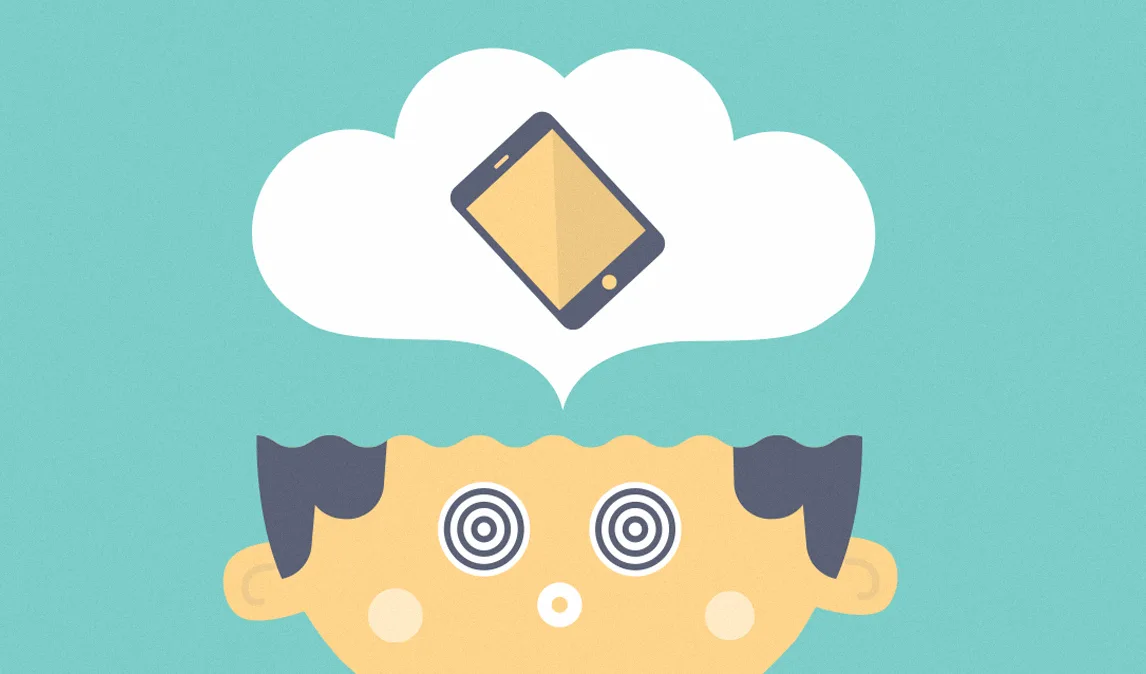Digital detox: how to avoid ‘technoference’ over the holiday season
How many of you are reading this article while simultaneously listening to holiday music, watching Netflix, reading tweets on your phone or watching TV? Whether you’re a digital ‘native,’ or digital ‘immigrant,’ chances are you spend a good amount of time online, plugged-in, and powered-up.
Out of the 7-plus billion people on Earth, over 3 billion are online. In the US, the time spent on a mobile device has risen to 2 hrs and 42 minutes per day – 86% of which is time spent on apps, according to analytics firm, Flurry. In this day and age, we have developed sharp multitasking skills to cope with the constant stream of incoming, fragmented digital chatter, often to the detriment of our focus and attention. Cell phones have become as common as cutlery at the dinner table. Big screen T.V.s decorate waiting rooms, pubs, nail salons, and just about any place where there are the tiniest windows of ‘idle’ time. Technology even infiltrates our moments of quiet - the SmartMat yoga mat gives you real-time feedback on how to correct your pose, for example. And when we’re not on the receiving end of digital data, we often seek it out. Every alert, from texts to tweets to emails to announcements, sends a chocolate-covered dopamine message to the brain’s reward system, feeding a cycle not unlike any other addiction. No wonder many of us feel overwhelmed and anxious when our phone’s battery dies or we lose signal!
Avoiding Digital Pitfalls
As with many things in life, it comes down to finding balance. We also happen to be blessed with positive aspects of technology, such as the ability to connect and learn from people around the world. Today, you can find just about the entire recorded history of humanity in the palm of your hand. Lucky us! But when it comes to our behavior, we must learn to navigate the waters of real life and virtual life in such a way that we connect to an ever-expanding social network, without disengaging from those immediately surrounding us. The scientific research on technology’s effects on our brain and behavior is still in its infancy. But more and more studies are showing that technology could impact our capacity to pay attention, remember information, come up with new ideas, or even engage in conversation with friends and family.
“Technoference”
“Technoference” and ‘‘phantom vibration syndrome.’’ No, these aren’t the latest dance moves; they are relatively new phenomena deriving from our relationship to technology. “Phantom vibration syndrome” is a perceived vibration from a cell phone that is not actually vibrating. Rather than a delusion, this could be a manifestation of anxiety that cell phones elicit in some. And “technoference” refers to everyday intrusions and interruptions in couple interactions that take place due to the technology devices and their ever-present nature. A recent study found that of the women surveyed, the majority of them felt that devices such as cell phones, computers and TVs frequently interrupted their interactions with their partners. And these frequent interruptions were also correlated with a lower sense of relationship satisfaction, more depressive symptoms and even lower life satisfaction. While this does not mean that technology invading our relationships is necessarily a bad thing (in fact a different study 3 found that positive messages, like sending a few <3 over text, was associated with higher relationship satisfaction), it should make us think.
Holiday Presence
I must admit, I’m a bit of a technophile but when we begin to pay more attention to our phone’s notifications than our partner’s requests, we may have to consider the impact our technology has on our personal interactions with others. If it becomes disruptive to our communication, activities or time spent with romantic partners, we may be sending mixed messages about what we value most. This can then lead to conflicts in relationships, worsening the issue. It’s not an either-or situation, we don’t have to choose between mindfulness or technology – it’s about mindful use of technology. As you pick presents this holiday season, think too about your presence. It’s a hectic time for all, but can we find a bit of space inside ourselves to be fully present and acknowledge others – even as we queue up for a gift-wrapping station, or order our favorite holiday drink? Make some tech-free time in your romantic relationships to talk or go on a walk. You might even discover an invigorating new holiday tradition with your loved one!



Be kind to your mind
- Access the full library of 500+ meditations on everything from stress, to resilience, to compassion
- Put your mind to bed with sleep sounds, music, and wind-down exercises
- Make mindfulness a part of your daily routine with tension-releasing workouts, relaxing yoga, Focus music playlists, and more
Meditation and mindfulness for any mind, any mood, any goal

Stay in the loop
Be the first to get updates on our latest content, special offers, and new features.
By signing up, you’re agreeing to receive marketing emails from Headspace. You can unsubscribe at any time. For more details, check out our Privacy Policy.
- © 2025 Headspace Inc.
- Terms & conditions
- Privacy policy
- Consumer Health Data
- Your privacy choices
- CA Privacy Notice
